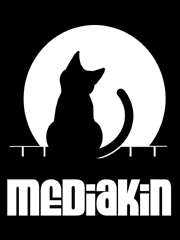| "All you need for a movie is a girl and a gun." -Jean-Luc Godard |
Bad Behaviour One Sheet Character Poster Design :
| Bad Behaviour \Cinema \Rough Poster Visual \ Concept Art \Exploitation \スケバン/女番/スケ番\ Updated 25-11-12 | |
|
Artwork Details :
| Artists Description and general comments. | |
|
|||||






Client : MEDiAKiN / Sterling Cinema Pty Ltd / Global Alliance Productions / Caldwell Entertainment
Brief : read script, on-set observations.
Medium : Digital : One of several Original presentation visuals Created in Adobe Photoshop 2010 a.d
Design Notes : Poster features actress Caroline Levien as ' Emma', armed with a nickel-plated colt 45 and a killer pair of fluffy bunny slippers...
VHS was an undisputed cultural phenomenon that lasted from September 9, 1976 when the first Victor HR-3300 VHS machine was presented to the president of JVC until the DVD was introduced to the US market in March 1997. After the DVD era started it was a slow and inevitable decline for VHS. According to the British Video Association ten million VHS Videos were sold in 2005 compared to two hundred and eleven million DVDs in the same year but back in the mid-80's VHS cover art was different, especially in the horror aisle. Almost all grindhouse and exploitation films tend to have fantastic poster art. Most of the time, the incredibly provocative and lurid artwork promised way more than the film's meagre budget could possibly deliver. Intense Colour and Extreme Graphics were the only ways to give your film a chance to be seen, especially in an era when many horror films were independently produced or released direct to video. VHS covers could be downright terrifying. A trip down the horror aisle at the video store could often be an act of bravery for my 13-year-old self, and, unfortunately, most often a much richer artistic experience than viewing the films inside those nightmarish Technicolor cases.
Grindhouse is an north american term for a theatre that mainly features "exploitation films"; an informal label which may be applied to any film which is generally considered to be both low budget and of low moral or artistic merit, and therefore apparently attempting to gain financial success by "exploiting" a current trend or a niche genre or a base desire for lurid subject matter.
These theatres garnered their label from the now defunct burlesque theatres previously located on 42nd Street in New York City.
In the 1943 film The G-String Murders aka Lady of Burlesque one of the characters refers to a burlesque theatre on 42nd Street (where they performed stripteases and bump 'n' grind dances) as a "grindhouse". The proliferation of television media greatly eroded the audience base for local and single-screen movie theatres, many of which had been built during the cinema boom of the '30s. In combination with urban decay after white flight to the burbs in the mid to late '60s, changing economics forced these theatres to either close or offer something that TV could not. So too the drive-in movie theatre began to decline in the 1960s and 1970s, theatre owners began to look for new and different ways to bring in patrons. One solution was to book exploitation films. Some producers from the 1950s to the 1980s made films directly for the drive-in market, and the commodity product needed for a weekly change led to another theory about the origin of the word: that the producers would "grind" films out.
Soft-core pornography and sleaze, or slasher horror and dubbed martial arts films from Hong Kong. Grindhouse films characteristically contain large amounts of sex, violence and/or bizarre subject matter. One of the Grindhouse genres were "roughies" or sexploitation, a mix of sex, violence and sadism. other subgenres included Biker films, Pinku eiga Blaxploitation, Vigilante films, Carsploitation, Chambara, Nazi Nuns with guns and many others...the quality varied, but low budget production values and poor print quality were common.
Critical opinions varied regarding typical grindhouse fare, but many films acquired cult following and critical praise. Double, triple, and "all night" bills on a single admission charge often encouraged patrons to spend long periods of time in the theatres. The milieu was largely and faithfully captured at the time by the magazine Sleazoid Express. By the '80s, home video and cable TV threatened to render the grindhouse obsolete. By the end of the decade, these theatres had vanished from LA's Broadway and Hollywood Boulevard, New York City's Times Square and San Francisco's Market Street. By the mid-'90s, these particular theatres had all but disappeared from north america, very few exist today. The Robert Rodriguez film, Planet Terror and the Quentin Tarantino film Death Proof, which were released together as Grind-house, were created as a homage to the genre. Similar films such as Machete (also by Rodriguez) and Drive Angry have appeared since. The video games House of the Dead: Overkill, Wet and Shadows of the Damned serve as homages to the grind-house horror movies. The author Jacques Boyreau released the book Portable Grind-house: The Lost Art of the VHS Box in 2009 about the history of the genre. The field is also the focus of the 2010 documentary American Grind-house.